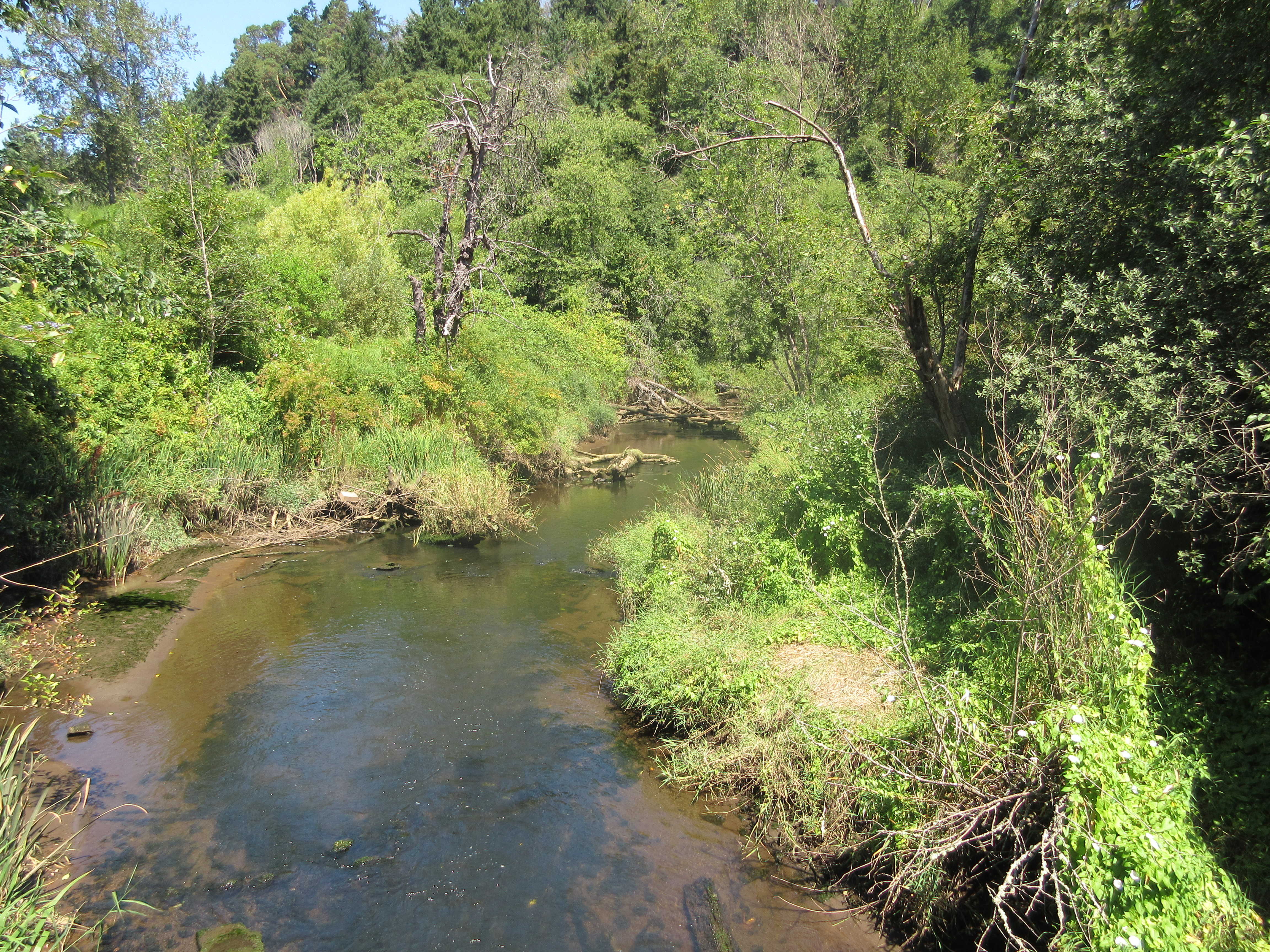Drainage Area: 3,385 acres
Significant Waterbodies: Hylebos Creek, Hylebos Waterway, Commencement Bay
View Map
Photo: Hylebos Creek
 Description: Much of the watershed contains steep slopes and bluffs with several intermittent streams that flow into Commencement Bay. Marine View Drive (Highway 509) separates the steep sloped areas of the Northeast Tacoma Watershed from the Hylebos Waterway. The gulches and wetlands in this area generally have intermittent water flow due to seasonally fluctuating groundwater. Groundwater seeps combined with sandy soils and steep slopes creates a large potential for erosion, and frequent landslides occur during winter months along Marine View Drive.
Description: Much of the watershed contains steep slopes and bluffs with several intermittent streams that flow into Commencement Bay. Marine View Drive (Highway 509) separates the steep sloped areas of the Northeast Tacoma Watershed from the Hylebos Waterway. The gulches and wetlands in this area generally have intermittent water flow due to seasonally fluctuating groundwater. Groundwater seeps combined with sandy soils and steep slopes creates a large potential for erosion, and frequent landslides occur during winter months along Marine View Drive.
While the upland area on top of the bluff is primarily residential development, the properties bordering the Hylebos Waterway and Marine View Drive are primarily industrial businesses.
Hylebos Creek is the only fish-bearing stream in the Northeast Tacoma Watershed. Only a small portion of the creek lies within City of Tacoma limits. Upstream, the Hylebos Creek system consists of approximately 350 miles of streams and 250 acres of wetlands and was one of the most productive small stream systems for salmonids in southern Puget Sound. Over time, the creek habitat quality has been severely impacted by development and urbanization. Although not a regional priority for salmon recovery, there is large community support to continue restoration and protection of the Hylebos Creek system.
The Hylebos Waterway is listed as a Superfund site as part of the Commencement Bay Nearshore Tideflats Superfund Site. The clean-up consisted of dredging of contaminated sediments, capping several intertidal shoreline properties and monitoring the natural recovery of up to 20 acres. Due to partial recontamination of the Hylebos Waterway, EPA is currently considering next steps for this site.
There are several habitat mitigation sites in this watershed including the City of Tacoma Lower Hylebos Creek Mitigation Site, Hylebos Creek Estuarine Marsh Restoration Site, and Port of Tacoma Place of Circling Waters mitigation site at the head of the Hylebos Waterway.